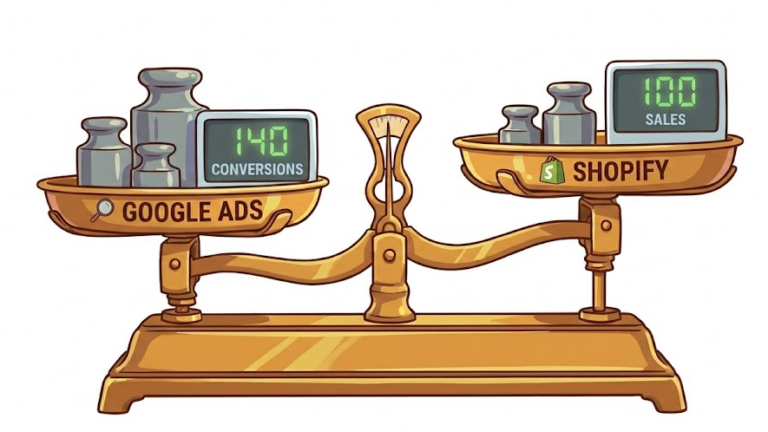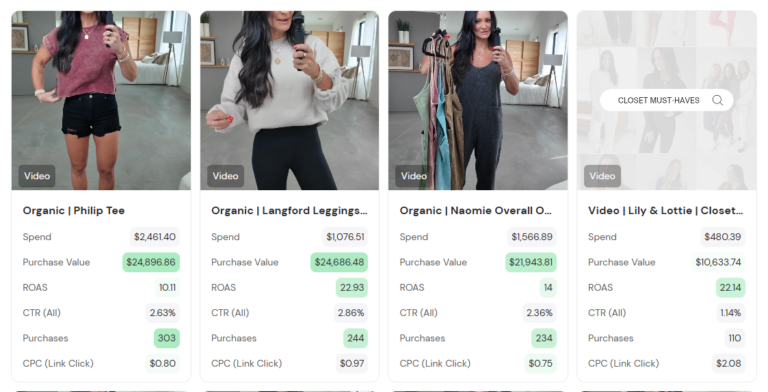Understanding the nuances of Google Ads campaigns can feel like navigating a maze. Today, we’re breaking down the differences between branded Standard Shopping, fully built Performance Max, and feed-only Performance Max campaigns—and why these distinctions matter for your business.
Introduction
Have you ever wondered which Google Ads campaign type delivers the best bang for your buck for branded campaigns for eCommerce businesses? With options like Standard Shopping, fully built Performance Max (PMAX) campaigns, and feed-only PMAX campaigns, it’s essential to understand how each performs to maximize your return on ad spend while protecting against competitors from taking your impression share. We’ve crunched the numbers across several clients and industries to shed light on this topic.
Breaking Down Each Campaign Type
These are the campaign types we tested in this experiment, and how each can be tailored to target branded queries.
- Standard Shopping: You have control over product-level bids and keyword targeting. Your products show up in the shopping feed when people search for them, but you have no control over assets except at the feed level.
Since you cannot directly target branded keywords with Standard Shopping, you will need to add a script that negates non-branded terms that come through the campaign.
- Fully Built PMax: Let Google’s AI handle everything, using your product feed across all Google channels (Search, Display, YouTube, etc.), but with less control. In this campaign type, you’re giving it the maximum amount of assets possible and trusting in Google’s AI magic!
Since Google’s AI attempts to target traffic that is most likely to convert, you can set the tROAS to a higher level than you would for non-branded queries (like 2000%) to make this campaign only spend on branded terms.
- Feed-Only PMax: This is the middle ground between Standard Shopping and a fully built Performance Max campaign. Google AI will still use your product feed to show to customers when they are searching, but placements are limited to only the shopping feed while still harnessing automation. In this scenario, you aren’t filling out any assets at all so Google relies on only the shopping feed.
Similar to fully built PMax, setting a higher tROAS can help the campaign focus on branded terms only.
The Data
To understand how different Google Ads campaigns stack up, we analyzed performance data from four clients across the three campaign types over a similar period. Let’s break down how each campaign type performed!
Performance Max – Fully Built
Performance Max – Feed Only
Standard Shopping
Analyzing the Numbers
Client 1:
Fully Built PMax campaign achieved a ROAS of 2.39x compared to 0.08x with Standard Shopping. This alone is a game-changing number for the account.
This was largely due to a number of non-branded terms that needed to be negated, which caused significant spend on irrelevant searches. CPC was lower here as the campaign was targeting multiple niches, leading to a broader range of costs and less focused results.
Client 2:
Client 2 saw nearly one-third of the conversion volume for just 16% of the spend, with half the CPA and double the ROAS compared to the feed-only Performance Max campaign. Meanwhile, Standard Shopping had nearly double the CPC and half the ROAS, making it a less efficient option.
Client 3:
The feed-only Performance Max campaign achieved a comparable CPA to the fully built version but was able to scale both spend and conversion volume, offering broader coverage on branded search terms.
Client 4:
The fully built Performance Max campaign delivered traffic at a similar cost per click (CPC) as the feed-only version but with a significantly higher ROAS (24.67x vs. 18.4x) and more than double the conversion volume. This provided far better protection for the brand. In contrast, Standard Shopping spent considerably more but generated 83% fewer conversions, resulting in a negative ROAS.
Across the board, fully built Performance Max campaigns consistently outperform the other campaign types, with a:
- Higher ROAS: Fully Built PMax campaigns deliver a significantly higher return on ad spend, meaning more revenue for every dollar spent.
- Lower CPA: The cost to acquire a customer is substantially lower with Fully Built PMax campaigns.
- Increased Conversions: More conversions are achieved at a lower cost, maximizing the efficiency of your ad spend.
But Wait—There’s a Caveat
While the data seems to crown fully built PMax campaigns as the clear winner, it’s important to consider how Google reports conversions and revenue. View-through conversions and Data-Driven Attribution can potentially skew the results.
View-through conversions occur when a user watches a video ad and then converts on the website later, without clicking through the advertisement. These are included in the conversions column, which can inflate the perceived performance of campaigns that run on Display, YouTube, and Gmail. This can result in:
- Potential Overreporting: Because fully built PMax campaigns include these channels, they might overreport conversions and ROAS.
- Attribution Nuances: Data-driven attribution assigns partial credit to various touchpoints, further complicating the true impact of these campaigns.
However, when we looked closer at Client 4’s fully built PMax campaign, for example, we found that less than 1% of its conversion value came from View-Through Conversions. This suggests that the impact of potential overreporting could be minimal.
It’s important to note that this column was recently added to Google Ads, and the data might not be fully up-to-date. There’s also a possibility that Google might be incentivized to inflate the performance of the Display Network. So, while the low percentage is encouraging, we should interpret these findings cautiously.
Shopping & Feed-Only Campaigns Might Show ‘Cleaner’ Data
Since Standard Shopping and Feed-Only PMAX campaigns do not focus on video channels, these issues are largely removed.
- Direct Click Conversions: These campaigns focus solely on the shopping feed, providing linear and trackable click conversions.
- Higher Confidence in Data: Without the noise of engaged view conversions, you can be more confident that the conversions reported are directly attributable to your ads.
Conclusion
Fully built Performance Max campaigns clearly outperform Standard Shopping and feed-only PMax in terms of ROAS, CPA, and volume capture, making them the best choice for maximizing returns. However, be mindful of how Google tracks conversions, especially with engaged view conversions that potentially inflate results.
By staying aware of these nuances, you can optimize your campaigns for cleaner, more accurate data.
Need Help Making Sense of It All?
Running Google Ads can feel like a lot, but you don’t have to figure it all out on your own. At Digital Position, we specialize in making sense of digital marketing so you get the most out of your ad budget. We help businesses like yours see real results from their campaigns.
Want to see what your Google Ads can really do? Let’s talk!






no replies